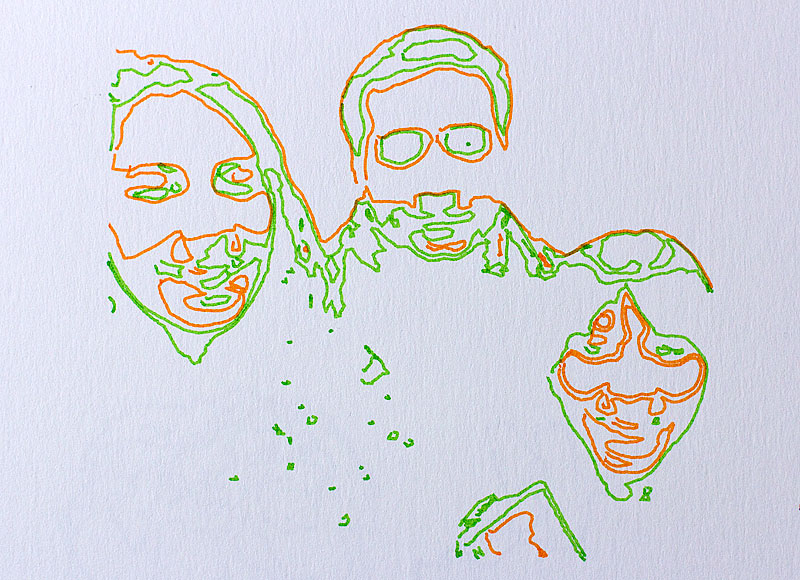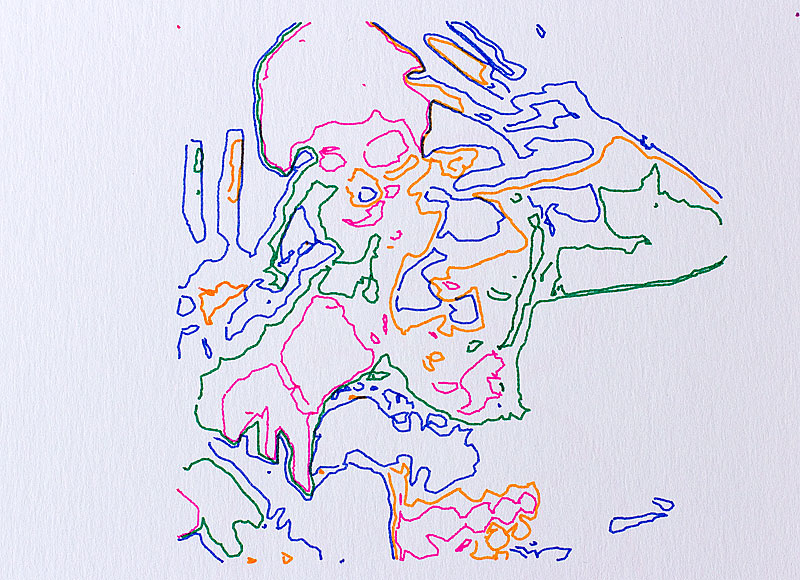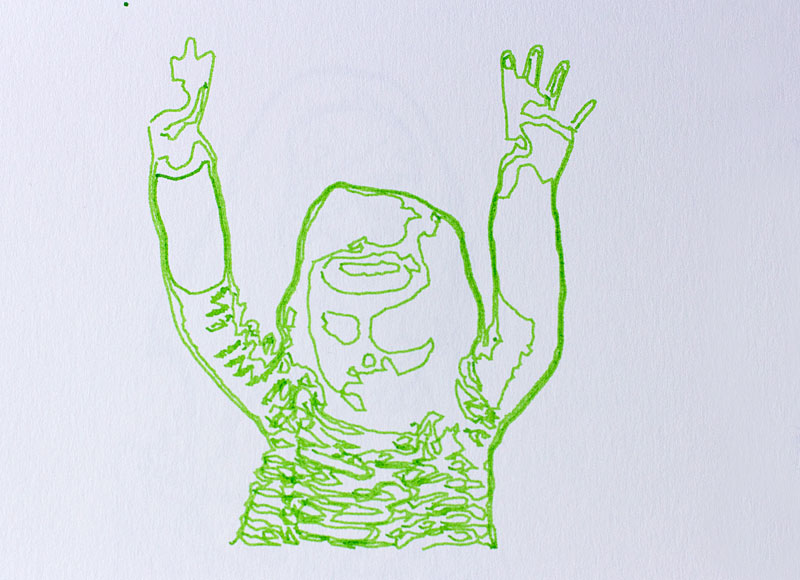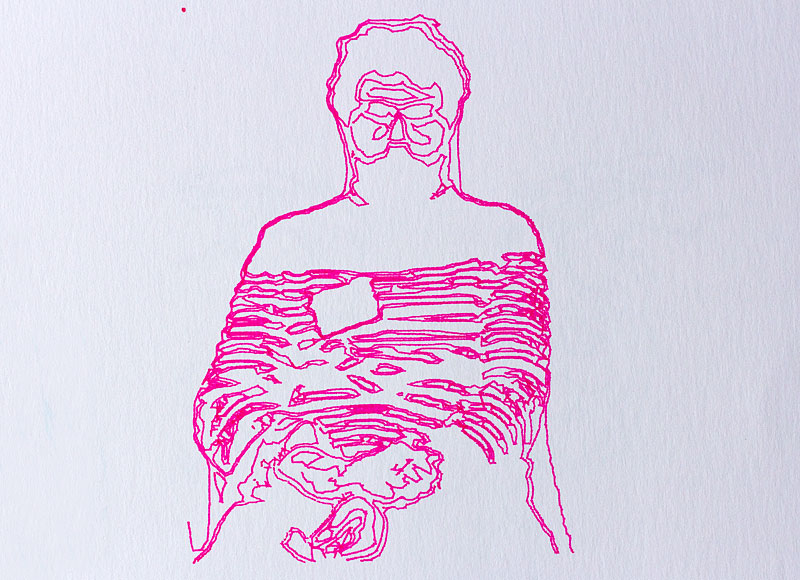
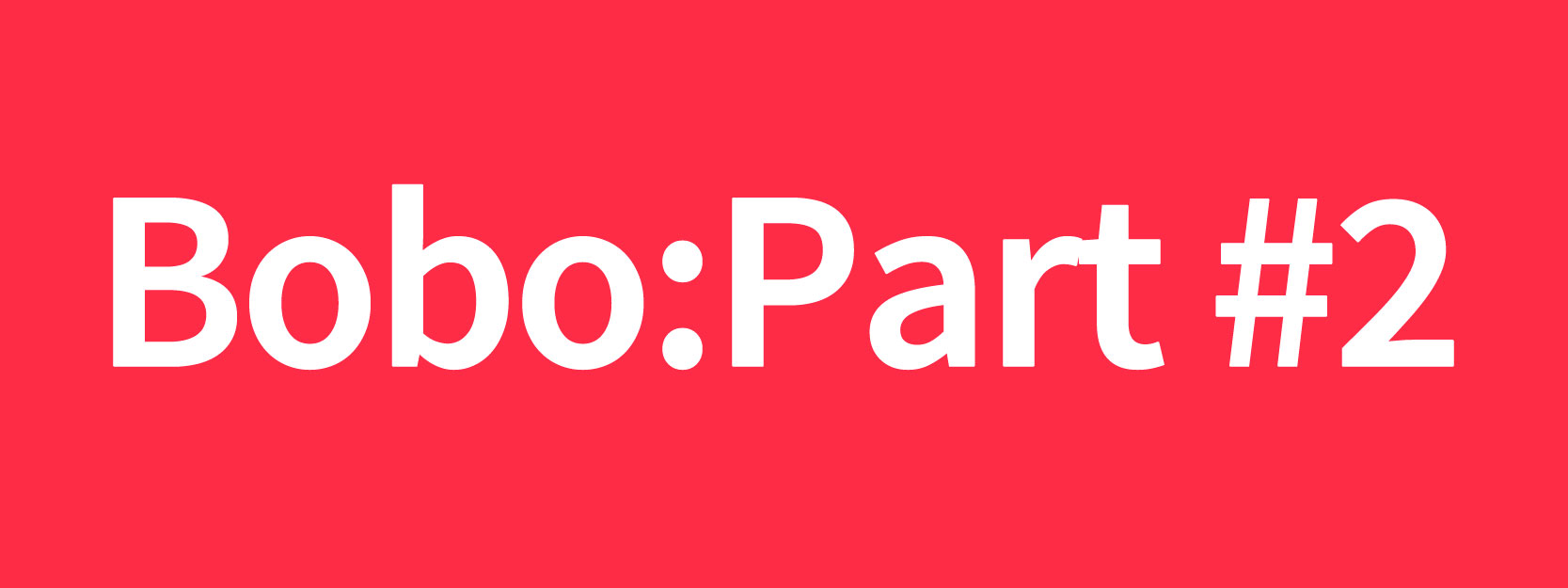

The focus is the potential for a plethora of unique and unexpected results to emerge from this rigid and at times quite limited set of constraints.
That was the underlying thinking behind our installation at the Centre Pompidou. As mentioned in the first part to this article, we had been inspired by Sol LeWitt’s rule-based means to creation. We were particularly driven by the infamous quote, "The idea becomes a machine that makes the art." However, the twist with our particular approach comes in playing off human and machine processes. In this short article, we explain the set up.
SAM@Bobo - A Sweet Intervention for Kids & Parents alike.
Video documentation by Katlas Production. 2017. Sweet ;–)
Some Research
Kerri Chandler - Atmosphere Brain Filling Curves Manfred Mohr Weighted Voronoi StipplingBasically, there are three main parts to the installation - input, process and output. The important point to retain is that the output results from two very distinct entities - the computer on the one hand, the human on the other.
The Input
For the installation we designed a simple photo booth. It was our means for capturing data. In our case, this data was generated from people's portraits. Custom-made software ran on a computer neatly hidden away. Visitors had a simple screen with real-time video feedback and one big green button to press to take a picture. We made it simple, dynamic and as intuitive as possible. Well, with one button, you couldn’t exactly go wrong could you?
So, the basic setup was to grab a still image from a live camera feed running edge detection. From here a little computer processing went on. Namely, the infamous join the dot program we had written especially for the project. From here participants could pick up a print of their portrait as a join the dot diagram. Each unique print came with a simple set of instructions to follow. Which leads us to the second part.
A compilation of screen captures from the photo booth software. - Team SPAM - 2017
The Process
Ah, that mystical part that all good French intellectuals love to devote their lives to - the creative process. Put them in a museum though with something to fondle and you distract the mind. Ahem, sorry about that. Er, yes, once the kiddies had their join the dot diagrams to draw, well, there wasn’t much else to do really. They were actually very happy just to sit down and join dots all day. However, we had a cunning plan, didn’t we. Hidden away in the centre of a huge open space, SAM was busy partaking in a process of it’s own. Drawing yes, joining dots, yes, reproducing portraits from the photo booth, yes. Yes, yes, yes, you got it down to a tea. Whilst we kept the kids (and their parents), happy in a drawing process of their own, SAM had surreptitiously stuffed it’s memory with the same join the dot diagrams generated from the photo booth.

Joining those dots.
Museum Works
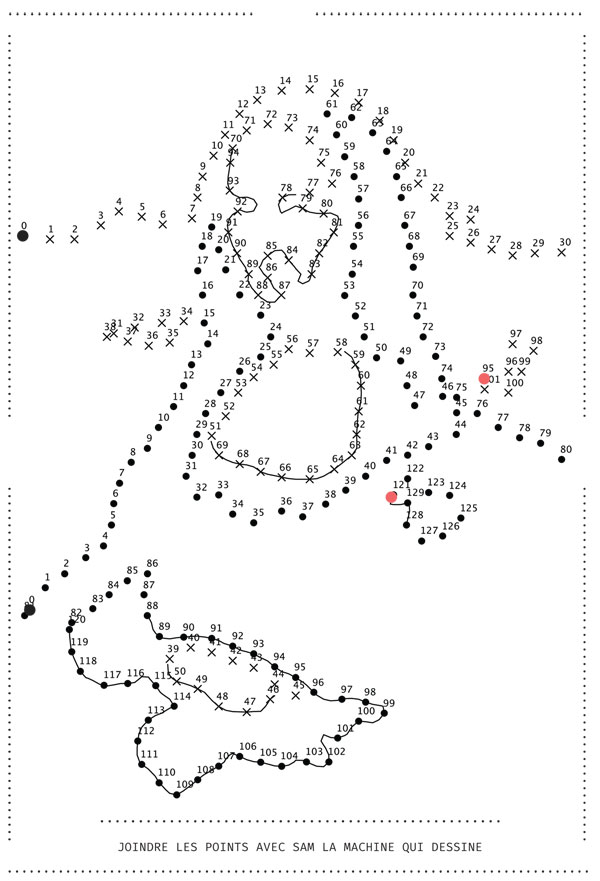
Marcel Duchamp.LHOOQ .
The Output
The machine executes it’s process for output while the participants embark on a rather different one. From what appears a fundamentally equal set of rules - a join the dot diagram - we get utterly different results. Yeah ok, I started this article with a no brainer and we’ll finish there shall we.
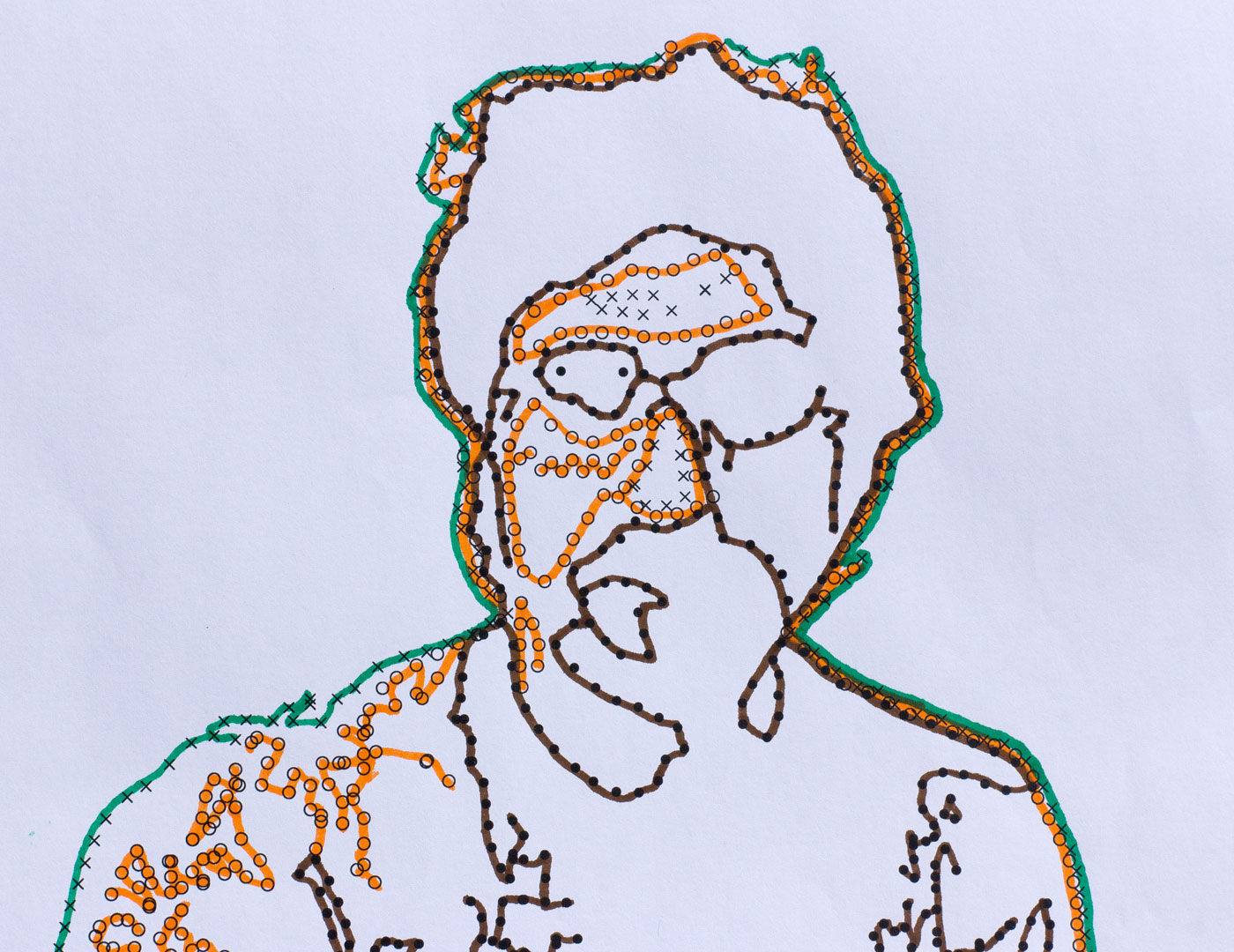
A finished portrait hand-drawn by a participant. Sweet as jam.
Compilation of drawings by SAM.
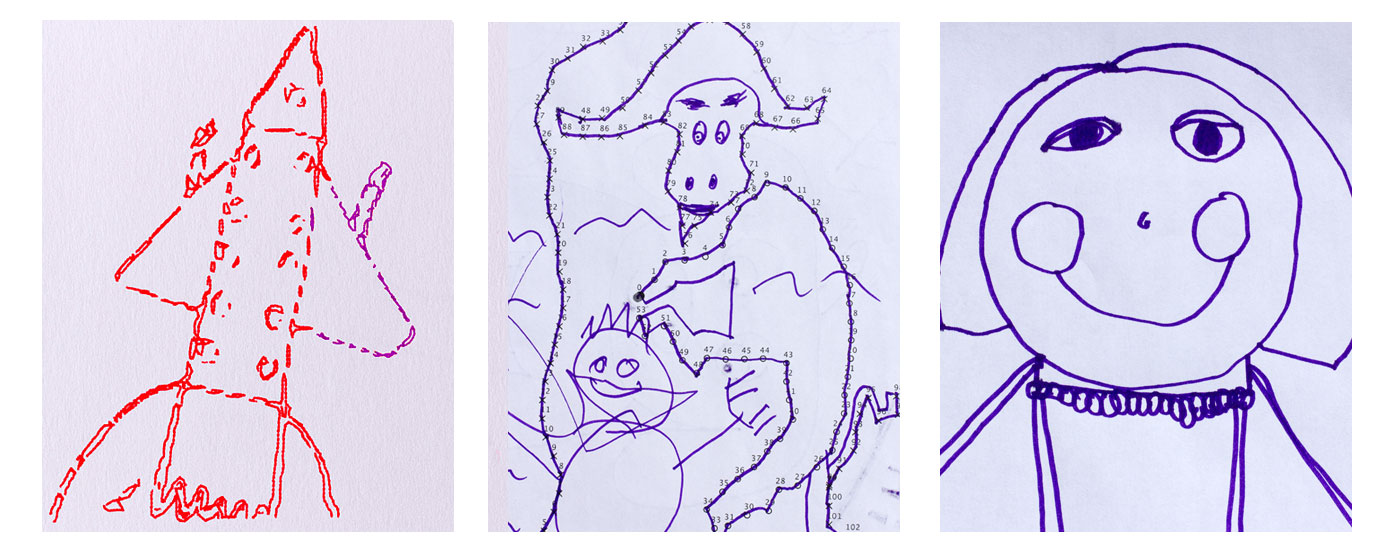
A selection of drawings that transgress the rules.
What have we learned ?
Actually, let’s just make it quite plain and simple to finish off. What is this installation about? It’s initial intention is to provide a fun and educative means for understanding what a computer program is - a formal set of rules to be executed. What ensued from that idea and in the development of our installation, manifests a rather subtle yet pertinent underlying point. And that point being? The machine always does what it’s told. We humans love to transgress.
